This article was medically reviewed by Cara Piskai. Dr. Cara Piskai, DMD is an Orthodontist and the Owner of Piskai Orthodontics in Voorhees, New Jersey. She has over five years of experience in orthodontics and dentofacial orthopedics. She completed a Doctor of Dental Medicine degree at the University of Pennsylvania School of Dental Medicine. She completed her residency and earned a Specialty Certificate in Orthodontics and a Master's degree in Oral Sciences at the University of Illinois-Chicago. Dr. Piskai is board-certified by the American Board of Orthodontics and is a member of the American Association of Orthodontists (AAO). She holds a position on the U.S. News & World Report Medical Review Board.
There are 10 references cited in this article, which can be found at the bottom of the page.
This article has been viewed 171,326 times.
As any orthodontist will tell you, while flossing can be difficult when you have traditional metal braces, it's more important than ever to keep the gaps in your teeth clean when you have these devices. Luckily, whether you're working with good-old-fashioned floss and your bare hands or any one of a number of helpful flossing tools, getting your teeth and braces squeaky-clean is a cinch once you get the hang of it.
Steps
Using Ordinary Floss
-
1Use waxed floss if possible. When you're flossing with braces, it's important to remember that there are plenty of metal pieces and corners to catch your floss on. Because of this, you'll want to use a thin, wax-coated floss whenever you can. Unwaxed, thread-like floss is much more likely to get stuck to your braces.[1]
- The amount of floss you should use can vary slightly based on the size of your mouth and your hands. Most dental resources recommend a piece about 12 – 18 inches (30 – 46 cm) long.
-
2Thread the floss behind the brace wire. Grab the floss with one hand a few inches from one end. Carefully thread it under or over the main wire of your braces, taking care not to get it stuck. When it's around the wire, pull it through so there's enough slack on either end to grab. A mirror can be a big help here.[2]
- Be gentle. Do not pull on the brace wire with the floss — you're just trying to get the floss behind it, not to "scrub" the wire itself.
Advertisement -
3Slide the floss between your teeth. Grab one end of the floss in each hand. Wrap the ends around your index fingers for a tighter grip. Adjust the floss so that it runs up the bottom of each index finger to the fingertip. Move one index finger inside your mouth and gently pull the floss so that it goes into the space between your teeth.[3]
- If you've flossed before, this movement should feel natural. You basically want to move the floss into the gap between the teeth, then push it down into the gap. For some of your teeth, this will probably be a tight fit — this is normal.
-
4Slide the floss up and down. Now that the floss is in between your teeth, use your fingers to slide it up and down from the gums to the point where it's difficult to keep moving it. Pull gently so that the floss rubs against the insides of both teeth.[4] You want to "scrub" as much of this inner space as possible — try doing it five times against each surface.
- This scrubbing motion may seem like it's not "doing" anything, but it is. Flossing isn't just for removing bits of food that get stuck — it's also important for removing plaque, an invisible film of bacteria that can cause decay, pain, and discoloration if it's not dealt with.[5]
-
5Carefully pull the floss out. Grab one end of the floss and gently pull until it comes free, taking care not to catch it on your braces. Congratulations — you've just flossed between one set of teeth!
-
6Repeat for each tooth until finished. Go down each row of teeth and carefully thread the floss between every set of teeth all the way to your furthest-back molars. When you have "scrubbed" with every set of teeth on the top and bottom of your mouth, you're done.[6]
- Take your time.[7] Flossing properly when you have braces can take up to three times longer than a normal flossing session, but it's especially important to floss when you're wearing orthodontic devices because these devices can get in the way of cleaning with a brush alone.
- You may also experience some gum bleeding which is normal due to inflammation which occurs when braces are placed in.
Using a Floss Threader
-
1
-
2Thread a piece of floss into the eye of the threader. It’s the same way you would thread a sewing needle. Insert the plastic needle under the archwire of your braces and pull the floss through.[10]
-
3Use the floss as you normally would.[11] Now that it’s in position, grab the floss in your hands and floss down between the teeth. Pull the floss out and repeat it with the same threader. The threader is useful for making it easier to get the floss into the correct position without scraping up your fingers.
- Be careful when you apply the pressure to get in between your teeth — go gently with a back and forth movement.
Using a Water Flosser
-
1Purchase a water flosser. Many dentists and orthodontists today recommend a special tool called a water flosser (or "oral irrigator") to help with flossing. Water flossers are available online, in specialty stores, and even at your dentist's office for about $50 and up (a popular water flosser brand is the WaterPik).[12]
-
2Fill the reservoir with water. There is an indicator line to show where the water should reach. Be sure to clean the reservoir regularly — you don’t want bacteria to breed.
- Add also mouthwash to the water to increase the antibacterial protection and prevent gingivitis.
-
3Use the water flosser. This tool shoots a narrow stream of water which can be used to remove particles of food and clean between teeth, though dentists don't usually recommend them in place of flossing. They can be really helpful as a complement to flossing, flushing out some of the food that might be in particularly difficult-to-reach places. As an added benefit, water flossing can be used for gum stimulation, restoring proper health and function to gums that are inflamed or receded.[13]
Exploring Other Options
-
1Use dental tape. If normal flossing hurts, a smooth and sometimes spongy dental tape might not. Dental tape is a special type of floss that's especially thin and wide — almost like a small ribbon. Dental tape is used in the same way as normal floss, but people who have painful teeth or gums often find it to be more comfortable.
-
2Use an interdental brush. Interdental brushes are small, flexible, pointed brushes that have bristles that look similar to a pine tree. Their unique shape makes them perfect for cleaning behind braces — simply insert the brush under the wire and between the teeth, then scrub to clean. Interdental brushes aren't available everywhere, so talk to your dentist or orthodontist if you're interested in getting one.[14]
- You can also use a bit of toothpaste on the interdental brush for better cleaning.
- Interdental brushes aren't intended to be used as a replacement for floss. They can't clean between the teeth as thoroughly as floss can. Instead, they're used along with floss to ensure that the area behind the braces receives enough cleaning.
-
3Use an orthodontic brush. An orthodontic brush is a special type of toothbrush with V-shaped bristles. These special bristles help it clean behind braces and other orthodontic appliances, making them a big help when it comes to keeping your teeth clean.[15]
- As with interdental brushes, orthodontic brushes are meant to be used with floss — not instead of it.
Expert Q&A
Did you know you can get expert answers for this article?
Unlock expert answers by supporting wikiHow
-
QuestionIs there an easier way to floss with braces?
 Cara PiskaiDr. Cara Piskai, DMD is an Orthodontist and the Owner of Piskai Orthodontics in Voorhees, New Jersey. She has over five years of experience in orthodontics and dentofacial orthopedics. She completed a Doctor of Dental Medicine degree at the University of Pennsylvania School of Dental Medicine. She completed her residency and earned a Specialty Certificate in Orthodontics and a Master's degree in Oral Sciences at the University of Illinois-Chicago. Dr. Piskai is board-certified by the American Board of Orthodontics and is a member of the American Association of Orthodontists (AAO). She holds a position on the U.S. News & World Report Medical Review Board.
Cara PiskaiDr. Cara Piskai, DMD is an Orthodontist and the Owner of Piskai Orthodontics in Voorhees, New Jersey. She has over five years of experience in orthodontics and dentofacial orthopedics. She completed a Doctor of Dental Medicine degree at the University of Pennsylvania School of Dental Medicine. She completed her residency and earned a Specialty Certificate in Orthodontics and a Master's degree in Oral Sciences at the University of Illinois-Chicago. Dr. Piskai is board-certified by the American Board of Orthodontics and is a member of the American Association of Orthodontists (AAO). She holds a position on the U.S. News & World Report Medical Review Board.
Orthodontist
-
QuestionI just got my braces and I tried flossing my back teeth, but it's way too hard! What can I do?
 Cristian Macau, DDSDr. Macau is an oral surgeon, periodontist, and aesthetician at Favero Dental Clinic in London. He received his DDS from Carol Davila University of Medicine in 2015.
Cristian Macau, DDSDr. Macau is an oral surgeon, periodontist, and aesthetician at Favero Dental Clinic in London. He received his DDS from Carol Davila University of Medicine in 2015.
Doctor of Dental Surgery
-
QuestionWhich brand of floss is best to use with braces?
 Cristian Macau, DDSDr. Macau is an oral surgeon, periodontist, and aesthetician at Favero Dental Clinic in London. He received his DDS from Carol Davila University of Medicine in 2015.
Cristian Macau, DDSDr. Macau is an oral surgeon, periodontist, and aesthetician at Favero Dental Clinic in London. He received his DDS from Carol Davila University of Medicine in 2015.
Doctor of Dental Surgery
Expert Interview
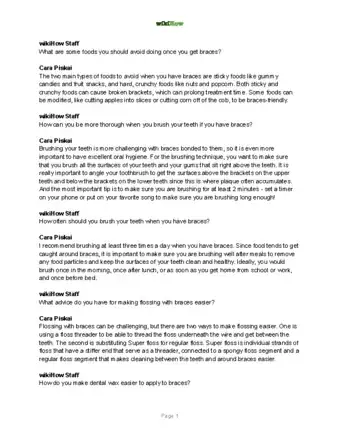
Thanks for reading our article! If you'd like to learn more about flossing with braces, check out our in-depth interview with Cara Piskai.
References
- ↑ http://www.northsideortho.com/home_care.html
- ↑ http://www.northsideortho.com/home_care.html
- ↑ https://www.theorthodontists.com.au/blog/flossing-with-braces-how-to-floss-when-you-have-braces
- ↑ Tu Anh Vu, DMD. Board Certified Dentist. Expert Interview. 10 April 2020.
- ↑ https://www.theorthodontists.com.au/blog/flossing-with-braces-how-to-floss-when-you-have-braces
- ↑ https://gulfcoastortho.com/brushing-and-flossing/
- ↑ Tu Anh Vu, DMD. Board Certified Dentist. Expert Interview. 10 April 2020.
- ↑ Cara Piskai. Orthodontist. Expert Interview. 20 December 2022.
- ↑ http://www.smilesforthefuture.com/orthodontics/brushing-and-flossing-w-braces
- ↑ http://www.smilesforthefuture.com/orthodontics/brushing-and-flossing-w-braces
- ↑ Cara Piskai. Orthodontist. Expert Interview. 20 December 2022.
- ↑ https://www.corsaortho.com/give-your-smile-in-braces-a-bath-with-a-water-flosser/
- ↑ https://www.corsaortho.com/give-your-smile-in-braces-a-bath-with-a-water-flosser/
- ↑ https://summitfamilyorthodontics.com/blog/water-flosser-braces/
- ↑ https://www.batemandentistry.com/blog/posts/how-to-floss-with-braces
- ↑ Tu Anh Vu, DMD. Board Certified Dentist. Expert Interview. 10 April 2020.
- ↑ Tu Anh Vu, DMD. Board Certified Dentist. Expert Interview. 10 April 2020.
- ↑ https://www.nhs.uk/common-health-questions/dental-health/why-should-i-use-dental-floss/
About This Article
To floss if you have braces, purchase wax-coated floss, since it’s less likely to get stuck to your braces. Then, thread a 12 to 18 inch piece of floss behind the brace wire and slide the floss between your teeth, close to the gums. Next, slide the floss up and down as you pull on it gently to remove plaque and food debris from the space between your teeth. Once you get to the point where it’s difficult to keep moving the floss, carefully pull the floss out, and repeat the threading and sliding process for each tooth. For more advice from Dental reviewer, including how to floss with a floss threader or water flosser, keep reading.
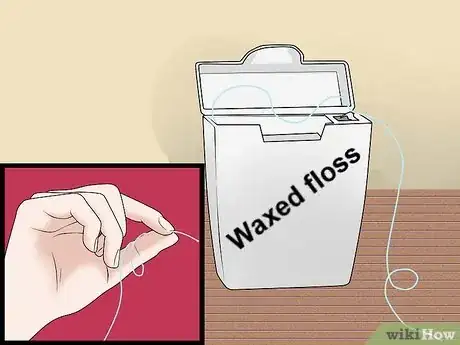


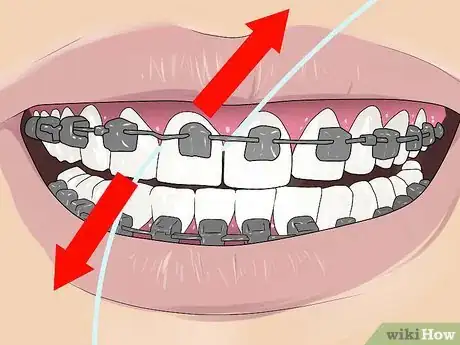

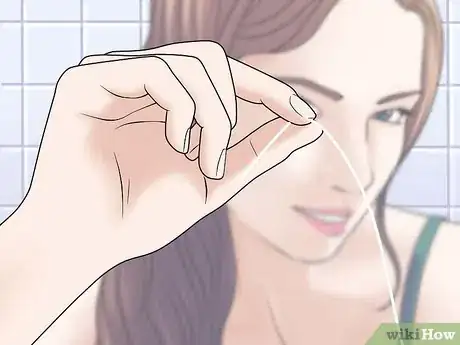
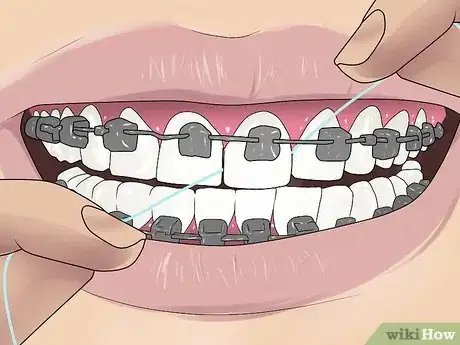
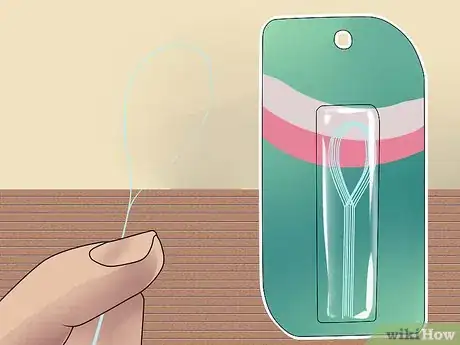


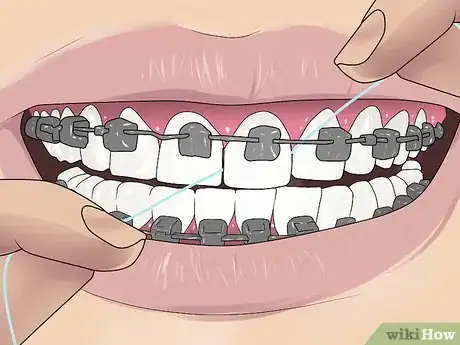
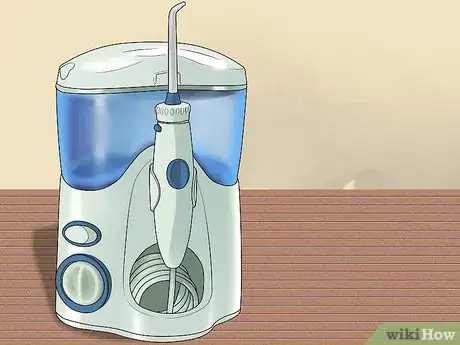
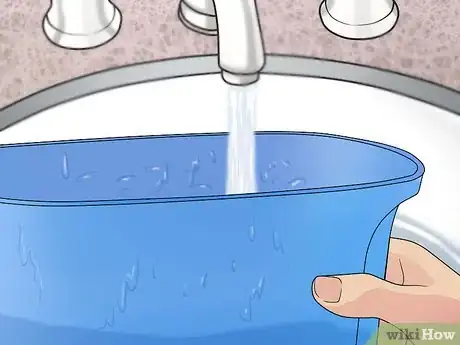
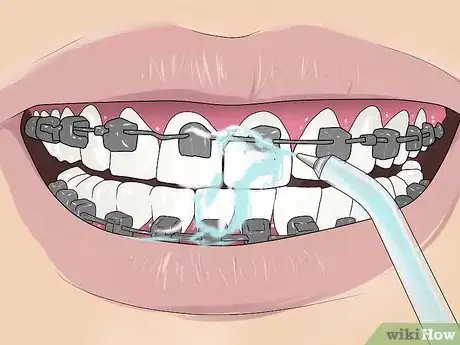
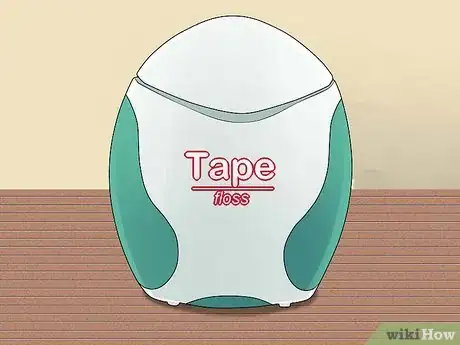
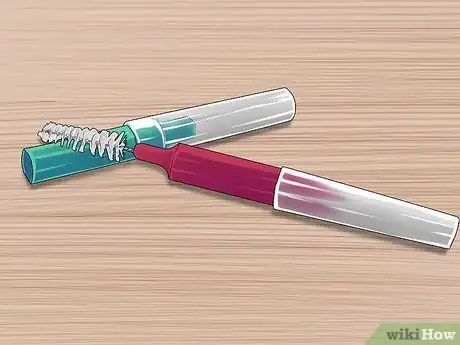
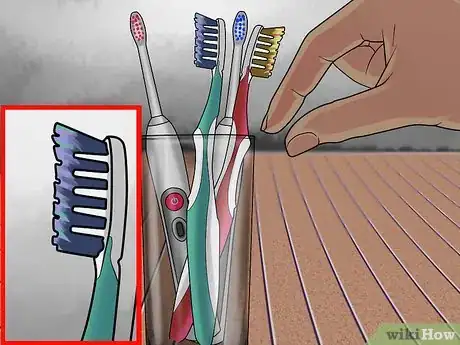


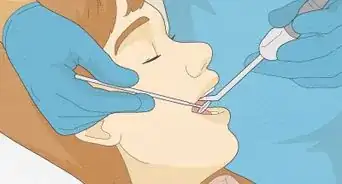


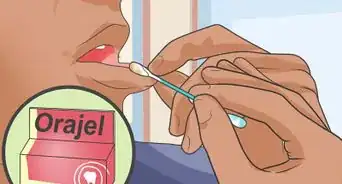



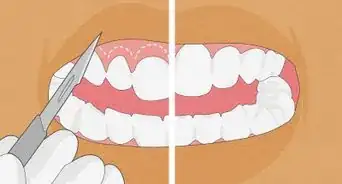
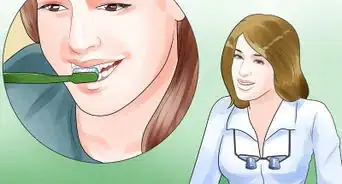

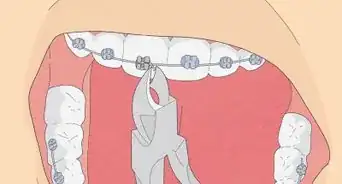








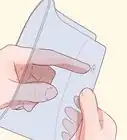


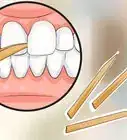



































Medical Disclaimer
The content of this article is not intended to be a substitute for professional medical advice, examination, diagnosis, or treatment. You should always contact your doctor or other qualified healthcare professional before starting, changing, or stopping any kind of health treatment.
Read More...